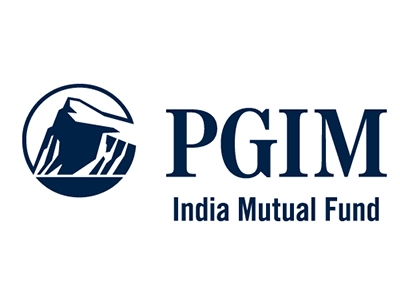Rental yields play an important role in the success of REITs. However, post covid, rental yields have become one of the major concerns of investors globally. Many corporates have largely adopted the work-from-home/blended model. How do you foresee the rental space gaining normalcy?
Global real estate FoF, which invests in a portfolio of REITs and real estate securities, as a structure has dual source of returns. The first one being the income component where primary source is rental income from the underlying property, which the REIT holds. The second component is capital appreciation by virtue of REITs being listed on the exchanges.
Future outlook, growth prospects, liquidity, inflows and outflows etc. can mean that a REIT can trade at a price which is higher or lower compared to its fundamental value. This can present opportunities on an ongoing basis. For PGIM India Global Select Real Estate securities FoF, the underlying portfolio is diversified across different property types, geographies etc. Since the portfolio is actively managed, the sector and sub themes, which offer higher rental yields with reset contracts and leases, which are tied to inflation are preferred. Certain sectors have proved to be more resilient than others. Thus, the fund endeavours to be overweight in themes, which relatively offer better opportunities. These are typically the non-traditional parts of the real estate market and provide diversification benefits to investors as well.
What are the key determinants for the global real estate market from here on?
Real estate markets are in an interesting phase right now. Historically, over very long term REITs in the US markets have been outperforming equities. However, in the last 5 years or so, real estate has relatively underperformed equities. We can expect a reversion to the mean going forward. Inflationary expectations globally which has seen a rising trend can sustain for longer as input prices, crude oil prices, raw materials etc. have all risen.
This has implication on global rates and yields and central bankers around the world can be expected to act accordingly, if inflation is not transitory. Hard assets like real estate historically have been a beneficiary in higher inflation in the past and relatively outperformed other major asset classes. With increasing commodity prices that are inputs into real estate, supply too has been constrained at a time when demand for space across sub categories is growing. This makes it landlords market rather than a tenants’ market in the near term.
Which global economies do you find attractive for real estate investing? What makes them attractive?
Real estate as a sector can be opaque when it comes to information and transparency. Especially in emerging economies. Therefore, from an information, maturity and regulation perspective, the developed markets are a better opportunity set to consider on a relative basis. Furthermore, if we take most of the global Real Estate indices of REITs they tend to be more concentrated in the developed markets like north America, Europe, Japan, UK followed by Asia Pacific.
What are the major risks associated with REIT investments?
Apart from the many benefits that REITs as a structure offers, especially in the context of the physical nature of investment, it does have some risks. Apart from some of the risks like the demand risk, regulatory environment, rate risk, yields etc, which is common to both physical property investment and listed REITs investment, it has the added volatility component in the short term due to the sentiment on the stocks markets. Liquidity and flows can also add to the volatility over short periods. Any risk from further variants of the virus that prompts action can also be a risk.
What percentage of total portfolio do you recommend to invest in REITs?
Among the many ongoing disruptions, we think there will be a disruption also in the way traditional portfolio advice and asset allocation is being thought about. The traditional 60:40 approach of allocating towards stocks and bonds is going a rethink and real, hard assets like real estate may find favour with investors and advisors as outlook on inflation and interest rate direction are factored in. Depending on the risk profile of the investors, their existing allocations, future requirements and overall comfort level an overall allocation of upto 20% can be suggested in a global real estate FoF as it can help in diversifying the portfolio further, and it adds another element for asset allocation strategies.
PGIM has recently launched PGIM India Global Select Real Estate Securities Fund of Fund (FoF). What opportunities will it offer beyond the traditional residential and commercial space?
Beyond the traditional opportunities available to Indian investors, in terms of residential and commercial real estate, there are multiple themes available globally. REITs offer access to lot of other property types and being listed in nature it offers liquidity but at the same time can be bit more volatile as well.
But on the other hand, REITs offer properties which benefit from this change. For example, warehousing and industrial spaces are one such property type. The change in consumer behaviour and preference for convenience is driving this and technology is acting as a great enabler. We can expect this trend, which has already been accelerated due to the pandemic to gain further momentum. The ongoing supply chain crisis will add to warehouse and spaces demand. Consumer behaviour shift in the use of space and thus moving from Just-in-time strategy to Just-in-case strategy. This as highlighted earlier, will benefit demand for warehouses. Similar example of consumer behaviour shift is worldwide digital usage which benefits data centres focused REITs, grocery shopping online benefiting cold storage and last mile retail, inability to manage large homes by older people, which benefits retirement homes etc.
For the benefit of those who are new to REITs FOFs, could you throw some light on the investment process? Does currency conversion have any impact on investors’ returns?
An Indian Fund of Fund (FoF) looks to feed into an underlying fund, which in our case is a globally diversified real estate fund, which in turn can invest into a portfolio of REITs and real estate securities. The investment team follows a rigorous investment process to identify opportunities all over the globe. The real estate market is characterized by private investment and listed space is not more than approx. 5% of the total market size. Being a large player, our expertise and knowledge in private market provides some advantages in terms of valuing and assessing opportunities in the listed space as well. We have a proprietary process to value the properties and assess any mispricing. A good example of the fund’s strong on ground research process is the fact that it was able to avoid any exposure to China in general and Evergrande in particular. This stems from the fact that any opaqueness in terms of disclosures and transparency adds another layer of risk, which the fund tends to avoid.
Which global markets will PGIM India Global Select Real Estate Securities Fund of Fund invest in and in what proportion?
Being a globally diversified fund, the scheme can look to invest in any region of the world. The scheme keeps in mind benchmark weightages from a risk management viewpoint and goes underweight/overweight accordingly. As part of the investment process and risk mitigation, the managers limit the overweight and underweight at a regional level to 2% in relation to the benchmark weights. Currently, the portfolio is diversified between North American market being a predominant allocation as REITs are evolved in these markets and also offer lot of different property types as options for e.g. senior living. The scheme also has exposure to U.K, Europe, Asia Pacific and Japan among other regions and countries. Being an actively managed fund, the same will depend on future outlook and trend and also the size of the opportunities.





